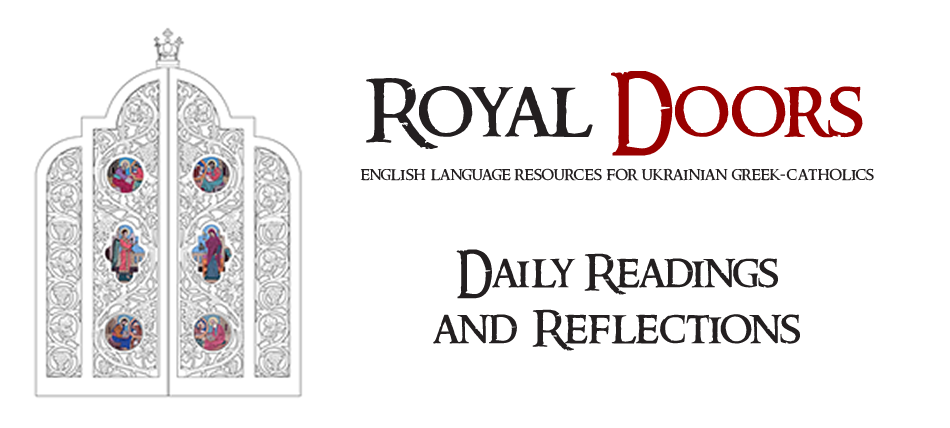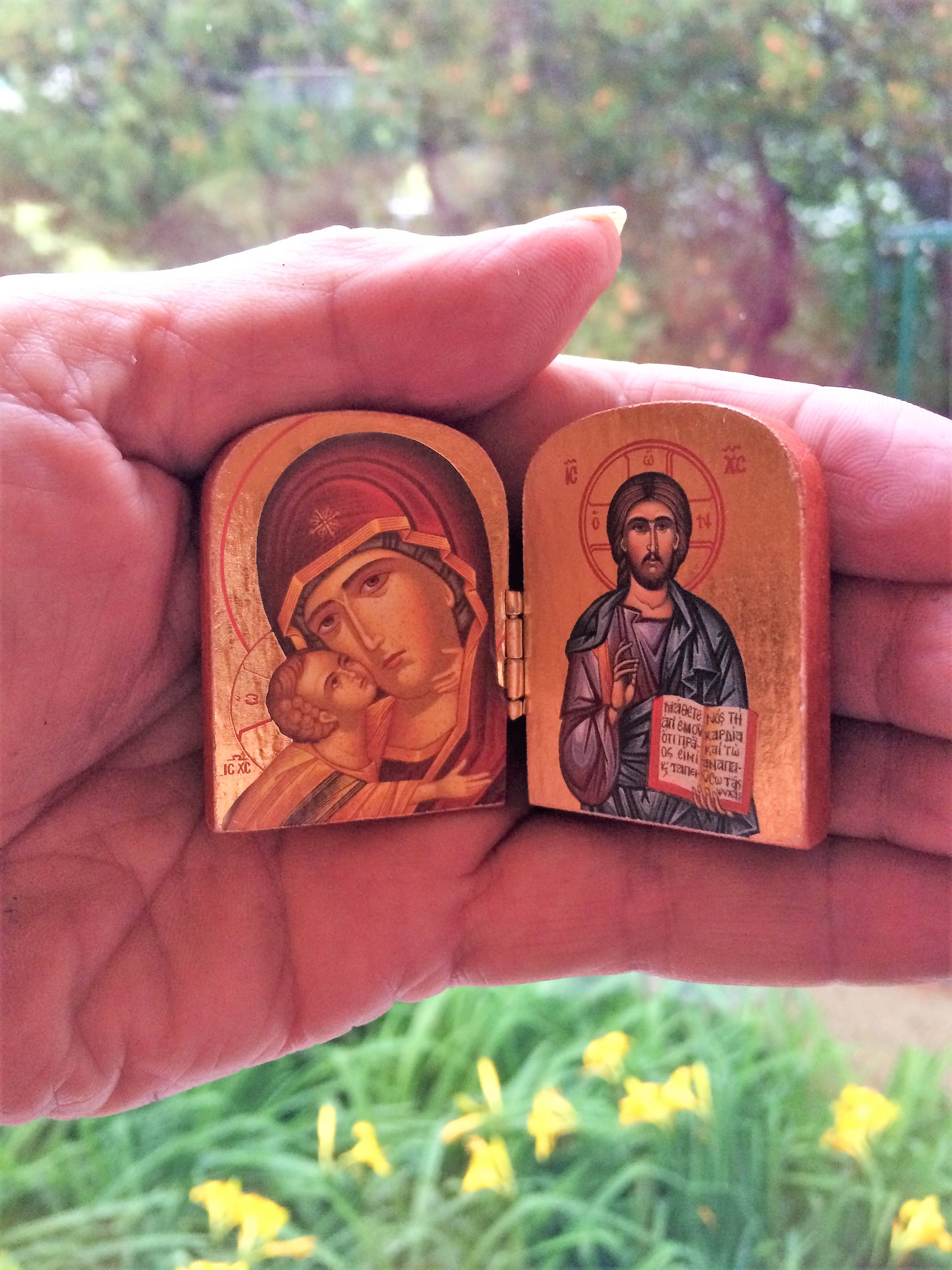Brent Kostyniuk
For Ukrainian Catholics, and indeed all Byzantine Christians, icons are a vital part of their prayer life. So closely linked are the two, some faithful find it difficult to pray without being able to gaze on an icon.
Often referred to as windows to heaven, icons are not meant to be realistic images of Jesus, the Theotokos, or the saints as they were on earth. Rather they portray theological truths. For this reason, icons are said to be written, rather than painted. We see the holy person as they are now, glorified in heaven.
Praying before an icon comes naturally in a Byzantine church. All eyes are focused on the iconostasis at the front. Throughout the church, the walls are lined with icons, perhaps including a patron saint or a favoured one. In this holy and peaceful atmosphere, we can truly appreciate the wisdom of Tradition which has preserved icons as a vital part of our worship.
However, prayer is not just for inside a church. We need to pray daily and wherever we are; icons can aid us in our meditations. Most Ukrainian homes have at least one icon somewhere on the walls. Taking the trouble to stand before it when praying can be truly beneficial. Many Ukrainian homes also have a prayer corner—a special table or stand set aside where icons are displayed, and perhaps candles and incense burned. In this miniature domestic shrine, we can come to approach the serenity found in the church.
There are other times and places when we feel especially drawn to prayer. Lying in a hospital bed, either alone or with family members at hand, intercessory prayers are, perhaps, more important than ever. However intense our motivation, prayer can be difficult in the sterile atmosphere of a hospital ward. There can be distractions of medical equipment and other patients. Even pain can make concentration difficult. At such times, a small diptych (from the Greek meaning two-fold) provides a wonderful link focal point for prayer. The diptych consists of two icons hinged together. When closed, the icons are protected and can be carried without fear of damaging the holy writings within. When opened, the two panels form an angle which allows the diptych to stand on its own. Some diptychs are small enough to be held in the palm of one’s hand; the window to heaven can be within sight, no matter what a person’s circumstances.
According to holy Tradition, the first icons were produced by Jesus. The Image of Edessa was a piece of cloth on which a miraculous image of the face of Jesus had been imprinted. This image, known as the Mandylion, remains a prototype for icons to this day. It came about when King Abgar of Edessa wrote to Jesus asking him to come and cure illness. Jesus did not go but promised to send one of his disciples. It is said that Jesus took a piece of linen cloth and held it to his face, producing the image. Eventually, one of the Seventy Disciples, Thaddeus of Edessa travelled to the king, taking the miraculous image with him. In this way, the king was healed.
The Image of Edessa belongs to a type of icons known as acheiropoieta—Greek, not-made-by-hand—that is, those which have come into existence miraculously. Another well-known icon not-made-by-hand is the Veil of Veronica whose very name signifies true icon or true image.
Although there were two periods of iconoclasm—image struggle or war on icons—the Seventh Ecumenical Council, held in Nicaea in 787, decreed that icons were indeed worthy of veneration. Several centuries earlier, St. Basil the Great expressed it this way. “The honour paid to the image passes to the prototype.” Thus, to kiss an icon of Christ, according to Eastern theology, is to show love towards Christ Jesus himself.
John of Damascus also insisted there was a difference between veneration and all-out worship. “When God is seen clothed in flesh, and conversing with men, I make an image of the God whom I see. I do not worship matter, I worship the God of matter, who became matter for my sake, and deigned to inhabit matter, who worked out my salvation through matter. I will not cease from honouring that matter which works my salvation. I venerate it, though not as God.” Icons played an important educational role in times when most faithful were illiterate. It has been said they are the “visible gospel.” In the Council of 860, it was stated that “all that is uttered in words written in syllables is also proclaimed in the language of colours.”
Whether we prayer before them in church, at home, or in some unfamiliar circumstances, icons are truly windows to heaven. In times of rejoicing, sadness, or tribulation, they help us to bridge the gap between our earthly lives and Jesus’ heavenly kingdom.

